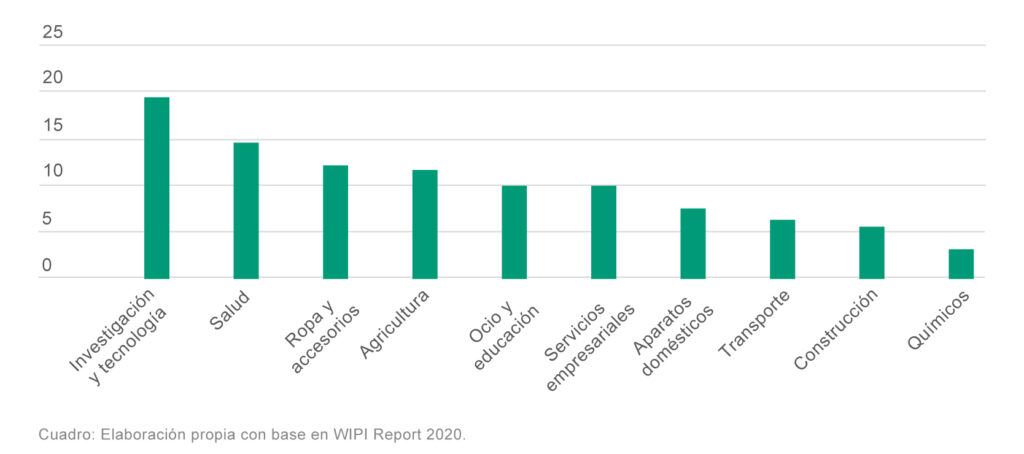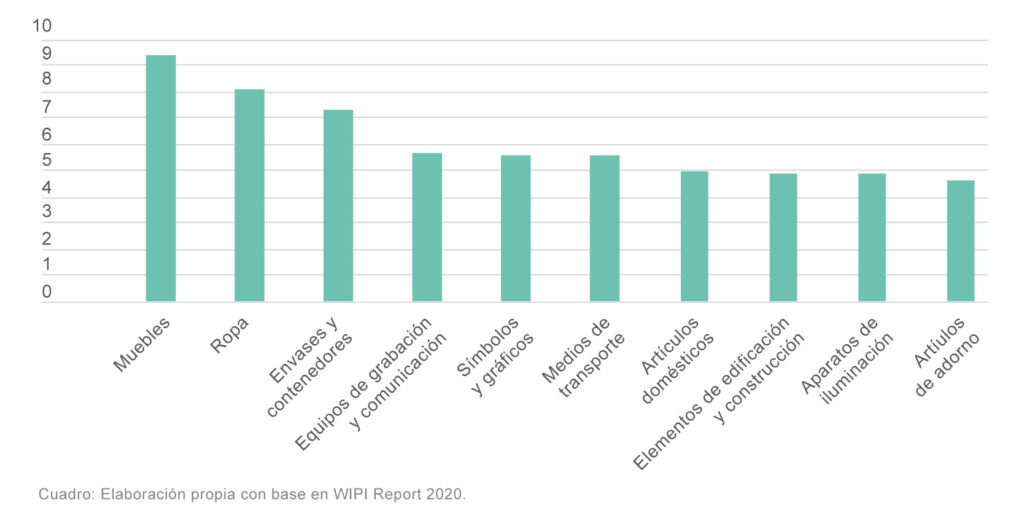The World Intellectual Property Organization (WIPO) has published its World Intellectual Property Indicators Report 2020, which contains valuable information on changes in intellectual property indicators and trends worldwide, from 2018 to 2019, as we discussed in this post.
Since these changes have an impact on various different industries and on the economy in general, in the first part of this article we mainly focused on the results of WIPO’s patent analysis. This time, we will take a look at other equally important branches of IP that are covered by the report: trademarks, industrial designs and creative industry (publishing).
Trademarks
WIPO’s report revealed that trademark applications continued to grow worldwide in 2019 – this time by 5.8%. In fact, this upward trend in applications worldwide has remained constant for the last 10 years, and the number of trademark applications filed each year since 2005 has quadrupled. This phenomenon is largely due to the double-digit annual growth rates recorded in 6 out of the last 15 years, despite the small declines seen in 2008 and 2009.
However, the increase in trademark filing activity indicated in the report was largely due to the huge number of applications filed in China, with the China IP office accounting for 55.7% of the annual increase in global trademark filing activity. China’s office was followed by those of Iran (+8.4%), Brazil (+5.4%), Russia (+5.2%), Turkey (+4.5%), Japan (+4.1%), USA (+3.9%) and India (+3%).
Specifically, WIPO has included a ranking of applications filed in low- and middle-income countries, in which Peru interestingly came in second-place with an increase of 15.2%. Costa Rica was in first place with a 16.7% increase. However, trademark applications were found to decline in a number of countries, such as Argentina, which recorded an evident double-digit decrease (11.6%).
We should add that at most offices reviewed by WIPO, trademark applications were filed mainly by residents seeking protection within their domestic jurisdiction. In 2019, residents filing at their respective home or regional offices accounted for 84.3% of global filing activity, with the remaining 15.7% associated with non-resident filings. This is the case of Peru, since of the 15.2% growth in applications, only 0.2% were non-resident applications.
A very interesting detail revealed in the report, is that WIPO grouped the 45 classes of the Nice Classification into 10 industry sectors in order to see which industries displayed greater interest in seeking trademark protection abroad in 2019. As we can see in the following chart, there was a marked increase in registering trademarks for goods and services in the research and technology sector whereas there was less interest in registering trademarks for chemical goods and services:
Table: Prepared in-house based on the WIPI Report 2020.

Industrial designs
As far as industrial designs are concerned, applications also increased in 2019 with respect to 2018, albeit by a timid 1.7%. Together with that of 2013, this growth rate is the lowest yearly increase in filings since 2005. The China office headed the ranking once again, accounting for 52.3% of designs in applications filed worldwide in 2019, representing designs. It was followed by the European Union Intellectual Property Office –EUIPO (113,319), South Korea (69,360), USA (49,848) and Turkey (46,202). This increase was boosted by non-resident design applications, which grew by 11.3%.
The Locarno classification includes 32 classes of industrial designs. WIPO grouped those classes into 12 industry sectors in order to highlight the most important sectors for designs contained in industrial design applications filed in each country in 2019. As can be seen in the following table, that year the classes with the greatest participation worldwide were furnishing (9.4%), clothing (8.1%) and packages and containers (7.3%). These three classes combined represented almost one fourth of all design applications:
Table: Prepared in-house based on the WIPI Report 2020.

Creative industry: publishing
In relation to creative industry, WIPO’s report focused on publishing, collecting data on the trade and educational sectors, legal deposits and published materials issued with an ISBN (a publications indicator and international standard that provides verified information on the size of the publishing market in different countries).
The analysis was based on a series of surveys carried out by WIPO, in cooperation with Centro Regional para al Fomento del Libro en América Latina y el Caribe (CERLALC), the Federation of European Publishers (FEP), the International ISBN Agency and the International Publishers Association (IPA).
Three indicators were taken into account in relation to the publishing industry:
- Sales and licensing revenue data: WIPO looked at data for total sales and licensing revenue in 2019 for the trade and educational sectors in 21 countries, which generated a combined revenue of USD 67.3 billion in 2019. The USA reported the largest net revenue (USD 23.5 billion), followed by Japan (USD 16.1 billion), the Republic of Korea (USD 6.2 billion), Germany (USD 5.6 billion), the United Kingdom (U.K.) (USD 5.4 billion) and France (USD 3 billion).
Disruptive online digital sales generated more than half of total trade sector revenue in Sweden (50.1%) and the U.K. (55.2%). The U.S. (43.5%) and Turkey (22%) also had a large proportion of their total trade sector revenue generated by online sales.
- Titles published: In 2019 the U.K. published around 202,000 titles, followed by Russia (115,171), France (107,143), Italy (100,266) and Spain (95,849). The trade sector accounted for more than half of all titles published in 31 of the 33 countries that had a by-sector breakdown available. The exceptions were Mexico (41%) and New Zealand (23.2%), where the trade sector share was below 50%.
- Copies sold: The US heads the ranking, reporting the largest number of copies sold, amounting to 2,629.6 million copies, followed by Japan (677.7 million), the United Kingdom (649.8 million) and Turkey (553.3 million). The trade sector accounted for more than 80% of total copies sold in the U.S. (95.3%), Norway (86.8%) and France (80.6%), while the educational sector had a high share of total copies sold in Turkey (69.9%), Mali (67.1%) and Mexico (66.1%).
In relation to legal deposits, the survey covered the following categories: books; music sheets; films; music audio files and videos. In this field Germany recorded the highest number of books published and deposited in a national repository in 2019 (693,722), followed by the U.K. (210,628), Japan (125,338) and Russia (115,171); it should be noted, however, that the largest markets, the US and China did not participate. In addition, of the 36 countries that provided data broken down by format (print, digital and others), the largest shares of digital books in national legal deposits are in Germany (82.2%), New Zealand (65.3%), the United Kingdom (61.8%), Norway (42%) and Finland (41.3%).
Finally, in relation to the ISBN, it is the most common publication identifier in use. In this regard, the International ISBN Agency, the official authority appointed by the International Organization for Standardization (ISO) to supervise the global use of the ISBN Standard, shared data from 16 countries: The U.S., with 5.2 million registered ISBNs, was by far the biggest user of the ISBN identifier in 2019, followed by the Republic of Korea (331,937), Germany (274,000), China (268,407), the U.K. (204,015), Italy (145,579) and Russia (105,856).
***











